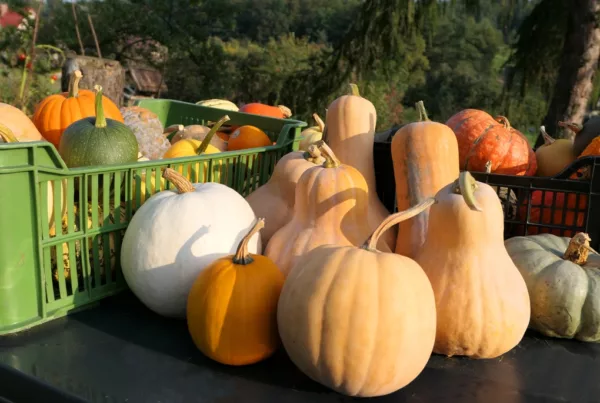Written by Kristina Hicks-Hamblin
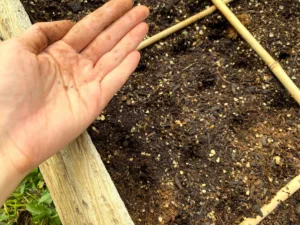 Once you are well-versed in the techniques of Square Foot Gardening, you might want to expand beyond basic crops such as tomatoes, cucumbers, and green beans. If you’d like to grow unusual herbs, flowers, or vegetables, you’ll need to know how to find square foot spacing for those plants.
Once you are well-versed in the techniques of Square Foot Gardening, you might want to expand beyond basic crops such as tomatoes, cucumbers, and green beans. If you’d like to grow unusual herbs, flowers, or vegetables, you’ll need to know how to find square foot spacing for those plants.
In this blog post you’ll learn how to find the proper spacing on your own! That way, the next time there’s an unfamiliar vegetable appealing to your sense of adventure or a lovely flower pulling at your heart strings, you’ll be ready. Keep reading to learn more!
Using Mel’s Method to Find Square Foot Spacing
The good news is – you don’t have to do any math to find the numbers you’re looking for.
Mel Bartholomew, the creator of the Square Foot Gardening Method, devised a set of general spacing guidelines we can follow based on plant size. The majority of common garden crops fall into one of these four categories: 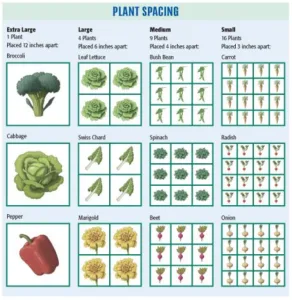
- Extra-large plants are placed 12 inches apart and include broccoli, brussels sprouts, cabbage, cauliflower, collards, eggplant, kale, mustard greens, okra, peppers, sweet potatoes, and vine tomatoes. (1 plant per square)
- Large sized crops are grown six inches apart and include bok choy, celery, corn, leaf lettuce, parsnips, and potatoes. (4 plants per square)
- Medium-sized plants are placed four inches apart. These include beets, bush beans, leeks, spinach, and turnips. (9 plants per square)
- Small-sized crops are grown three inches apart and include carrots, chives, onions, and small radish varieties. (16 plants per square)
By and large most garden plants fit into one of the above categories, small, medium, large, or extra-large. Keep in mind that veggies growing underground, potatoes and carrots, will need a top hat on their square, they may not need a lot of space to grow, but need depth.
There are some exceptions, however. Bush squash varieties, for instance, require 9 whole squares while vining varieties need two squares. Peas and pole beans, on the other hand, are sown 8 seeds per square.
Find Spacing Using Seed Packets
Now if you’re growing an unusual vegetable, flower, or herb, you may not know off hand which category – small, medium, large, or extra-large – it will fall into.
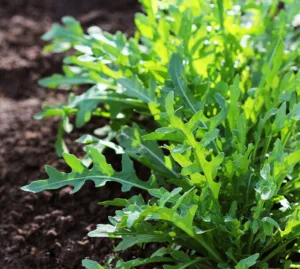
Arugula, a spicy salad green.
Rather than guessing, there is a more precise way to find out how densely to plant it, and this is the one that Mel used to create his recommendations:
Inspect your seed packet – it should say “thin to X inches apart.”
Once you have the “thin to” number, you can refer to the chart listed above. If the seed packet recommends thinning to three inches apart, then you can consider it a small plant and sow or plant 16 per square foot.
For instance, my packet of borage, a flowering annual that attracts bees and butterflies, tells me to sow a group of three seeds every twelve inches, then thin to one plant every twelve inches.
Since the SFG Method skips the thinning process to save us from wasting seeds and extra work, I’ll sow just one seed in the center of one of my grid sections.
Let’s take another example, arugula. My wild arugula packet tells me to thin to one plant every six inches. Looking at the chart above, that means I can grow four arugula plants per square foot.
Find Spacing Using Mature Spread
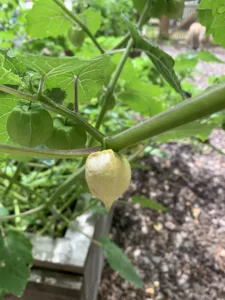
Ground Cherries.
Seed packets can be used in another way, as well – finding the mature spread of the plant. Let’s look at another example.
My packet of ground cherries, a relative of the tomato that produces delicious pineapple flavored berries, tells me that a plant will spread to be 18-24 inches wide.
That means I’ll need to dedicate more than one section of my grid for one plant since ground cherries will take up one and a half to two square feet – in other words, one and a half to two sections of the grid for each plant.
Using mature spread as your guideline might be helpful for herbs, flowers, and vegetables purchased from nurseries as well.
How to Handle Ranges
Sometimes a seed packet may recommend sowing plants not at a precise distance from one another, but within a given range.
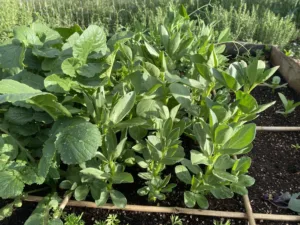
Fava beans planted nine per square. Photo by Kristina Hicks-Hamblin.
Let’s consider an example – ‘Windsor’ fava beans, a type of cool season legume that has a different growth habit than either peas or green beans.
My seed packet advises me to sow fava beans four to six inches apart, but it also says that thinning is not necessary. That means I can plant them either densely (four inches apart) or with more room (six inches apart).
I choose to plant my favas on the dense side (four inches apart) because my climate is dry and I don’t tend to have issues with fungal pathogens, so I sow nine per grid section.
On the other hand, if you live in a more humid climate, you may want a bit more air flow around each plant, so sow them six inches apart – in other words, four per section.
You can apply this to other types of plants as well, allowing more generous spacing when increased air flow is preferred.
As you can see from these examples, finding square foot spacing on your own is pretty easy thanks to Mel Bartholomew’s helpful guidelines.



